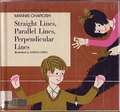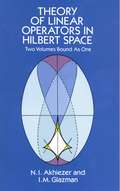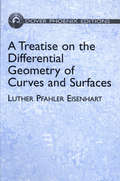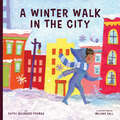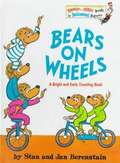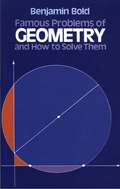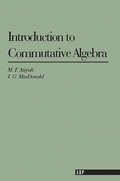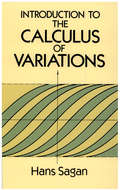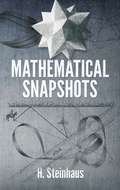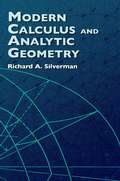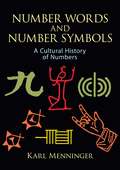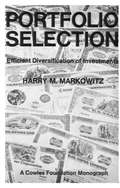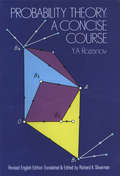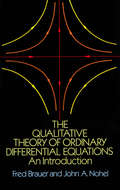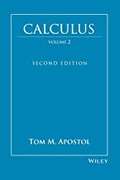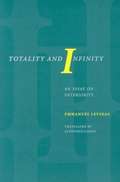- Table View
- List View
Speed Mathematics Simplified (Dover Books on Mathematics)
by Edward StoddardThis entertaining, easy-to-follow book is ideal for anyone who works with numbers and wants to develop greater speed, ease, and accuracy in doing mathematical calculations. In an inspiring introduction, science writer Edward Stoddard offers important suggestions for mastering an entirely new system of figuring. Without having to discard acquired information about mathematical computation, students build on the knowledge they already have, "streamline" these techniques for rapid use and then combine them with classic shortcuts.Initially, readers learn to master a basic technique known as the Japanese "automatic" figuring method — the principle behind the abacus. This method enables users to multiply without carrying, divide with half the written work of long division, and mentally solve mathematical problems that usually require pencil and paper or a calculator. Additional chapters explain how to build speed in addition and subtraction, how to check for accuracy, master fractions, work quickly with decimals, handle percentages, and much more. A valuable asset for people in business who work with numbers on a variety of levels, this outstanding book will also appeal to students, teachers, and anyone looking for a reliable way to improve skill and speed in doing basic arithmetic.
Straight Lines, Parallel Lines, Perpendicular Lines (Young Math Books)
by Mannis Charosh Enrico ArnoUsing an imaginative approach to basic principles, this book invites the reader to explore, to understand, and to enjoy the principles of mathematics.
Theory of Linear Operators in Hilbert Space
by I. M. Glazman N. I. AkhiezerThis classic textbook by two mathematicians from the USSR's prestigious Kharkov Mathematics Institute introduces linear operators in Hilbert space, and presents in detail the geometry of Hilbert space and the spectral theory of unitary and self-adjoint operators. It is directed to students at graduate and advanced undergraduate levels, but because of the exceptional clarity of its theoretical presentation and the inclusion of results obtained by Soviet mathematicians, it should prove invaluable for every mathematician and physicist. 1961, 1963 edition.
A Treatise on the Differential Geometry of Curves and Surfaces (Dover Books on Mathematics)
by Luther Pfahler EisenhartCreated especially for graduate students, this introductory treatise on differential geometry has been a highly successful textbook for many years. Its unusually detailed and concrete approach includes a thorough explanation of the geometry of curves and surfaces, concentrating on problems that will be most helpful to students. 1909 edition.
Winter Walk in the City (In The City Ser.)
by Cathy Goldberg FishmanFollow this adventure through the city in the winter, and peek into the windows to explore multicultural winter holidays.
Bears on Wheels
by Jan Berenstain Stan BerenstainAn acrobatic act begins with one bear on a unicycle and ends with twenty-one bears and sixteen wheels flying through the air.
Famous Problems of Geometry and How to Solve Them (Dover Books on Mathematics)
by Benjamin BoldIt took two millennia to prove the impossible; that is, to prove it is not possible to solve some famous Greek problems in the Greek way (using only straight edge and compasses). In the process of trying to square the circle, trisect the angle and duplicate the cube, other mathematical discoveries were made; for these seemingly trivial diversions occupied some of history's great mathematical minds. Why did Archimedes, Euclid, Newton, Fermat, Gauss, Descartes among so many devote themselves to these conundrums? This book brings readers actively into historical and modern procedures for working the problems, and into the new mathematics that had to be invented before they could be "solved."The quest for the circle in the square, the trisected angle, duplicated cube and other straight-edge-compass constructions may be conveniently divided into three periods: from the Greeks, to seventeenth-century calculus and analytic geometry, to nineteenth-century sophistication in irrational and transcendental numbers. Mathematics teacher Benjamin Bold devotes a chapter to each problem, with additional chapters on complex numbers and analytic criteria for constructability. The author guides amateur straight-edge puzzlists into these fascinating complexities with commentary and sets of problems after each chapter. Some knowledge of calculus will enable readers to follow the problems; full solutions are given at the end of the book.Students of mathematics and geometry, anyone who would like to challenge the Greeks at their own game and simultaneously delve into the development of modern mathematics, will appreciate this book. Find out how Gauss decided to make mathematics his life work upon waking one morning with a vision of a 17-sided polygon in his head; discover the crucial significance of eπi = -1, "one of the most amazing formulas in all of mathematics." These famous problems, clearly explicated and diagrammed, will amaze and edify curious students and math connoisseurs.
Introduction To Commutative Algebra
by Michael Atiyah I. G. MacdonaldThis book grew out of a course of lectures given to third year undergraduates at Oxford University and it has the modest aim of producing a rapid introduction to the subject. It is designed to be read by students who have had a first elementary course in general algebra. On the other hand, it is not intended as a substitute for the more voluminous tracts such as Zariski-Samuel or Bourbaki. We have concentrated on certain central topics, and large areas, such as field theory, are not touched. In content we cover rather more ground than Northcott and our treatment is substantially different in that, following the modern trend, we put more emphasis on modules and localization.
Introduction to Commutative Algebra
by M. F. Atiyah I. G. MacdonaldThis book grew out of a course of lectures given to third year undergraduates at Oxford University and it has the modest aim of producing a rapid introduction to the subject. It is designed to be read by students who have had a first elementary course in general algebra. On the other hand, it is not intended as a substitute for the more voluminous tracts such as Zariski-Samuel or Bourbaki. We have concentrated on certain central topics, and large areas, such as field theory, are not touched. In content we cover rather more ground than Northcott and our treatment is substantially different in that, following the modern trend, we put more emphasis on modules and localization.
Introduction to the Calculus of Variations
by Hans SaganExcellent text provides basis for thorough understanding of the problems, methods and techniques of the calculus of variations and prepares readers for the study of modern optimal control theory. Treatment limited to extensive coverage of single integral problems in one and more unknown functions. Carefully chosen variational problems and over 400 exercises. "Should find wide acceptance as a text and reference."--American Mathematical Monthly. 1969 edition. Bibliography.
Mathematical Snapshots
by H. SteinhausNumerous photographs and diagrams help explain and illustrate mathematical phenomena in this series of thought-provoking expositions. Ranging from simple puzzles and games to more advanced problems, topics include the psychology of lottery players, the arrangement of chromosomes in a human cell, new and larger prime numbers, the fair division of a cake, how to find the shortest possible way to link a dozen locations by rail, and many other absorbing conundrums. A fascinating glimpse into the world of numbers and their uses. 1969 edition. 391 black-and-white illustrations.
Modern Calculus and Analytic Geometry
by Richard A. SilvermanA self-contained text for an introductory course, this volume places strong emphasis on physical applications. Key elements of differential equations and linear algebra are introduced early and are consistently referenced, all theorems are proved using elementary methods, and numerous worked-out examples appear throughout. The highly readable text approaches calculus from the student's viewpoint and points out potential stumbling blocks before they develop. A collection of more than 1,600 problems ranges from exercise material to exploration of new points of theory -- many of the answers are found at the end of the book; some of them worked out fully so that the entire process can be followed. This well-organized, unified text is copiously illustrated, amply cross-referenced, and fully indexed.
Number Words and Number Symbols: A Cultural History of Numbers
by Karl MenningerThis book is not only a fascinating introduction to the concept of number and to numbers themselves, hut a multifaceted linguistic and historical analysis of how numbers have developed and evolved in many different cultures. Drawing on evidence from history, literature, philosophy and ethnology, noted German scholar Karl Menninger. recounts the development of numbers both as they are spoken (and written as words) and as symbolic abstract numerals that can he readily manipulated and combined.Despite the immense erudition the author brings to the topic, he maintains a light tone throughout, presenting much of the information in anecdotal form. Moreover, almost 300 illustrations (photographs and drawings) and many comparative language tables serve to enhance the text. The author begins with a lucid treatment of number sequence and number language, including the formation of number words in both Indo-European and non-IndoEuropean languages, hidden number words and the evolution of the number sequence. He then turns to written numerals and computations: finger counting, folk symbols for numbers, alphabetical numerals, the "German" Roman numerals, the abacus and more. The final section concerns the development of our modem decimal system, with its place notation and zero, based on the Indian number system, and its introduction to the West through the work of the Italian mathematician Fibonacci. The author concludes with a review of spoken numbers and number symbols in China and Japan.
Portfolio Selection
by Harry M. MarkowitzThis is a classic book, representing the first major breakthrough in the field of modern financial theory. In effect, it created the mathematics of portfolio selection in a model which has turned out to be the indispensable building block from which the theory of the demand for risky securities is constructed. It also became an essential reference for individuals and financial institutions actually selecting optimal portfolios. Long out of print and unavailable to numerous recent entrants to both financial theory and financial practice, this new edition leaves the existing text as it stands but adds substantial new material including a new bibliography and a fascinating biographical piece on the birth of the field of finance.
Probability Theory: A Concise Course
by Y. A. RozanovThis book, a concise introduction to modern probability theory and certain of its ramifications, deals with a subject indispensable to natural scientists and mathematicians alike. Here the readers, with some knowledge of mathematics, will find an excellent treatment of the elements of probability together with numerous applications. Professor Y. A. Rozanov, an internationally known mathematician whose work in probability theory and stochastic processes has received wide acclaim, combines succinctness of style with a judicious selection of topics. His book is highly readable, fast-moving, and self-contained.The author begins with basic concepts and moves on to combination of events, dependent events and random variables. He then covers Bernoulli trials and the De Moivre-Laplace theorem, which involve three important probability distributions (binomial, Poisson, and normal or Gaussian). The last three chapters are devoted to limit theorems, a detailed treatment of Markov chains, continuous Markov processes. Also included are appendixes on information theory, game theory, branching processes, and problems of optimal control. Each of the eight chapters and four appendixes has been equipped with numerous relevant problems (150 of them), many with hints and answers. This volume is another in the popular series of fine translations from the Russian by Richard A. Silverman. Dr. Silverman, a former member of the Courant Institute of Mathematical Sciences of New York University and the Lincoln Laboratory of the Massachusetts Institute of Technology, is himself the author of numerous papers on applied probability theory. He has heavily revised the English edition and added new material. The clear exposition, the ample illustrations and problems, the cross-references, index, and bibliography make this book useful for self-study or the classroom.
The Qualitative Theory of Ordinary Differential Equations: An Introduction
by John A. Nohel Fred Brauer"This is a very good book ... with many well-chosen examples and illustrations." -- American Mathematical MonthlyThis highly regarded text presents a self-contained introduction to some important aspects of modern qualitative theory for ordinary differential equations. It is accessible to any student of physical sciences, mathematics or engineering who has a good knowledge of calculus and of the elements of linear algebra. In addition, algebraic results are stated as needed; the less familiar ones are proved either in the text or in appendixes.The topics covered in the first three chapters are the standard theorems concerning linear systems, existence and uniqueness of solutions, and dependence on parameters. The next three chapters, the heart of the book, deal with stability theory and some applications, such as oscillation phenomena, self-excited oscillations and the regulator problem of Lurie.One of the special features of this work is its abundance of exercises-routine computations, completions of mathematical arguments, extensions of theorems and applications to physical problems. Moreover, they are found in the body of the text where they naturally occur, offering students substantial aid in understanding the ideas and concepts discussed. The level is intended for students ranging from juniors to first-year graduate students in mathematics, physics or engineering; however, the book is also ideal for a one-semester undergraduate course in ordinary differential equations, or for engineers in need of a course in state space methods.
Test Calculus: Volume 2
by Tom M. ApostolAn introduction to the calculus, with an excellent balance between theory and technique. Integration is treated before differentiation -- this is a departure from most modern texts, but it is historically correct, and it is the best way to establish the true connection between the integral and the derivative. Proofs of all the important theorems are given, generally preceded by geometric or intuitive discussion. This Second Edition introduces the mean-value theorems and their applications earlier in the text, incorporates a treatment of linear algebra, and contains many new and easier exercises. As in the first edition, an interesting historical introduction precedes each important new concept.
Totality and Infinity: An Essay on Exteriority
by Emmanuel Levinas Alphonso LingisFirst published in English by Duquesne in 1969, this has become one of the classics of modern philosophy.

